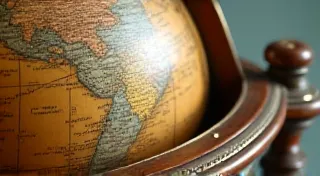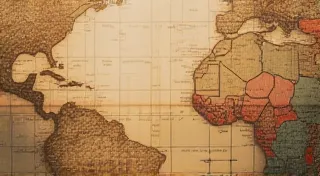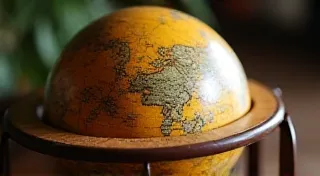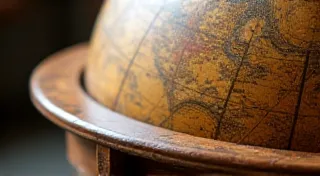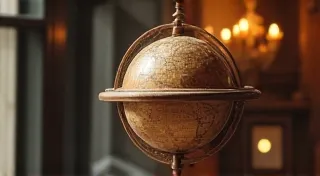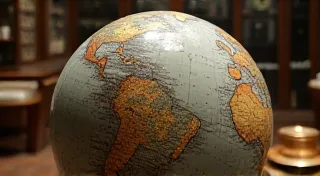Ethical Considerations in Antique Globe Restoration
Restoring antique globes is a rewarding craft, blending historical appreciation with practical skill. However, it’s more than just applying fresh paint or patching paper. It carries with it a significant responsibility: upholding the ethical considerations inherent in preserving history. This article explores those responsibilities, emphasizing the need for preservation over wholesale replication and the critical importance of respecting the globe’s original historical integrity. The process isn't just about technical skill; it demands a deep understanding of the artifact’s significance and a commitment to preserving its authenticity.
The Preservationist's Oath: Less is More
The modern approach to antique globe restoration moves away from the practices of previous generations. Previously, restorers sometimes felt compelled to 'correct' perceived inaccuracies or to modernize the globe's appearance. This often resulted in alterations that erased valuable historical information. Today, the guiding principle should be preservation. The goal isn’t to make the globe look new, but to stabilize its condition and prevent further deterioration. The temptation to 'improve' can be strong, but a seasoned restorer knows that true preservation involves acknowledging and respecting the globe's existing condition, even its imperfections.
This means carefully assessing what can be saved and what needs intervention. Significant damage or fragility may necessitate repair, but even then, the technique should be reversible whenever possible. New materials should be compatible with the original, minimizing the risk of future damage. The patina, the accumulated character and aging marks, is integral to the globe’s history. Removing it is akin to erasing a layer of its story. Understanding the materials used in the globe’s construction – the paper, inks, and stand materials – is also vital for informed restoration decisions.
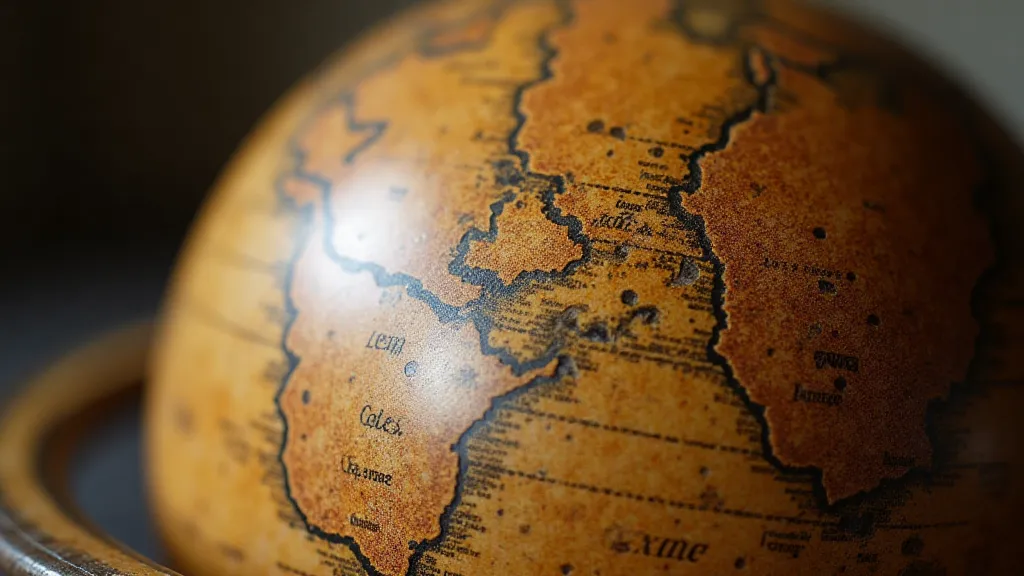
Understanding Historical Integrity: Beyond Cartography
Antique globes are more than just beautiful maps; they are time capsules, reflecting the political, scientific, and artistic views of their era. The cartography itself is crucial – the geographical representations, the naming conventions, the political boundaries – they all provide invaluable insights into the historical context. But the integrity goes beyond just the map. Consider the globe’s construction: the type of paper used for the map sheets, the materials used for the stand and armature, the style of hand-lettering. These details often provide crucial clues about the globe's origin, maker, and intended audience. Recognizing the nuances of cartouche design, for example, can provide significant insights into the globe's history – a topic explored in more detail in our article on Understanding Globe Cartouches: History and Restoration.
Any repair or restoration work should strive to maintain this integrity. For example, if a map sheet is torn, the repair should be as invisible as possible, using archival-quality paper that mimics the original's texture and color. Replacing a missing map sheet with a modern reproduction is almost always ethically questionable, as it introduces an anachronism. Such alterations fundamentally compromise the globe’s authenticity and historical value. The decision of whether and how to repair paper damage can be complex, and understanding specific techniques for Repairing Globe Paper Tears: Techniques for Gentle Mending is essential for any restorer committed to ethical practice.
Documentation: A Restorer’s Duty
Thorough documentation is a cornerstone of ethical globe restoration. Every step taken, every material used, should be meticulously recorded. This documentation serves several vital purposes:
Proper documentation isn’t just about recording the ‘what’ but also the ‘why.’ A detailed record should explain the rationale behind each decision, the materials considered, and the methods employed. This level of detail allows future researchers and conservators to build upon the knowledge gained and to avoid potential pitfalls.
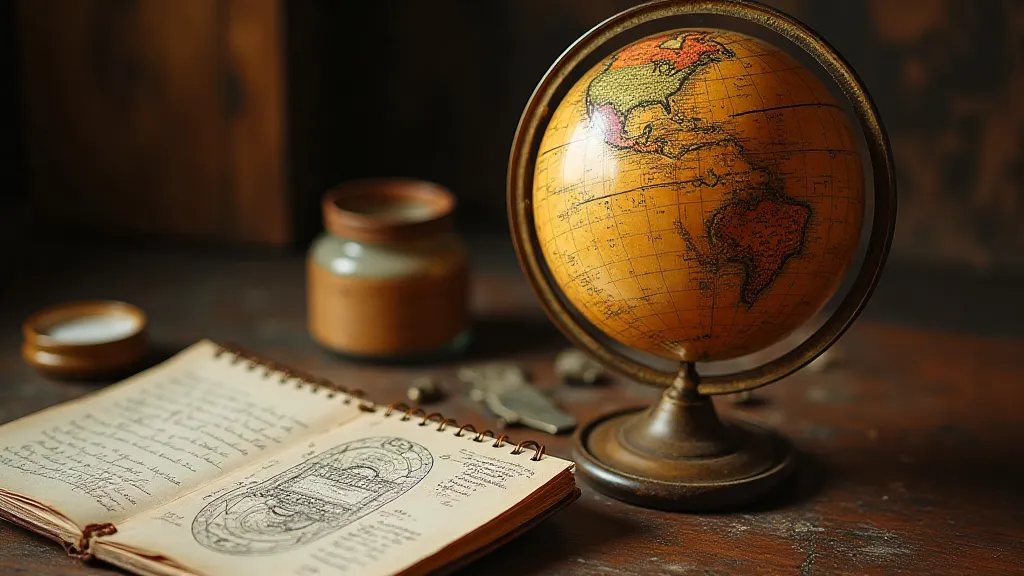
Addressing Common Ethical Dilemmas
Restorers frequently encounter situations that require careful ethical consideration. Here are a few examples:
Beyond these common dilemmas, restorers may also face challenges related to cleaning. Removing accumulated dirt and grime safely requires a delicate touch and a thorough understanding of the globe’s materials. Often, gentle cleaning methods are preferred over harsh chemicals, as the latter can damage the delicate paper and inks.
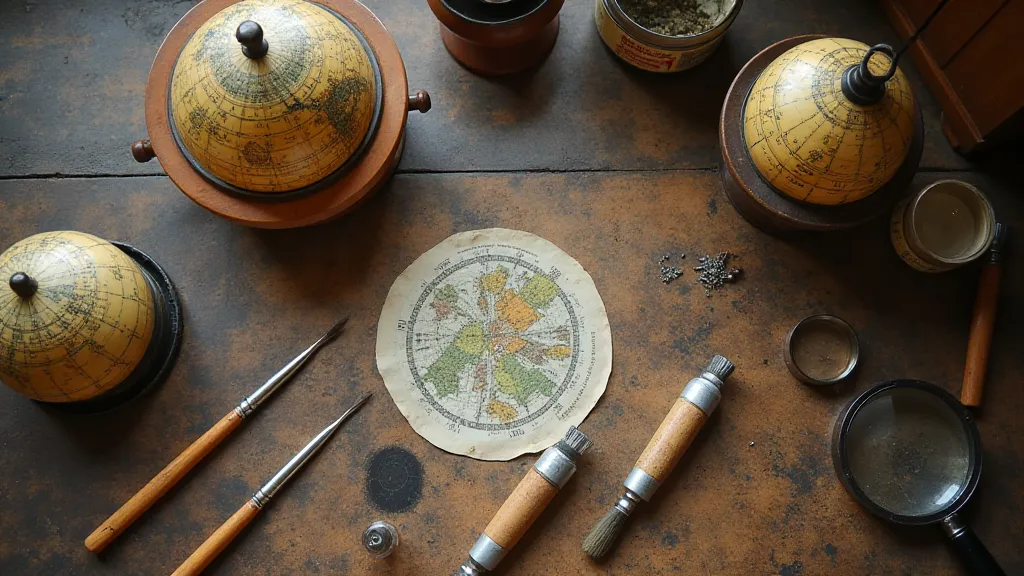
The Importance of Material Compatibility and Reversibility
A fundamental principle of ethical globe restoration is the use of reversible materials and techniques. This means selecting materials that are compatible with the original materials and that can be removed or altered in the future without causing further damage. For example, adhesives should be pH-neutral and easily removable. This principle applies not only to adhesives but to all materials used in the restoration process, from paper repair materials to conservation-grade coatings. The goal is to ensure that future generations of conservators have the option to refine or reverse the work done today.
Distinguishing Authentic Globes from Reproductions
The market for antique globes is not without its share of fakes and reproductions. Recognizing these imitations is a crucial skill for both restorers and collectors. There are several telltale signs that can indicate a globe is not what it appears to be, including the quality of the cartography, the materials used in its construction, and the style of hand-lettering. Careful examination of these details, combined with a knowledge of historical globe production techniques, can help to identify fraudulent items. It’s a complex field, requiring considerable expertise – something we delve into further in our guide on Recognizing Fake Antique Globes: Identifying Red Flags.
Cleaning Considerations: Gentle Methods and Careful Assessment
While cleaning is sometimes necessary to reveal the globe’s original beauty, it’s a delicate process that requires careful assessment and the use of gentle methods. Harsh chemicals and abrasive cleaning techniques can cause irreversible damage to the paper and inks. A thorough understanding of the globe's materials is essential for selecting appropriate cleaning agents and techniques. Often, a combination of gentle brushing, vacuuming, and localized cleaning methods is preferred.
Conclusion: Respecting the Past, Protecting the Future
Ethical considerations are paramount in antique globe restoration. By prioritizing preservation over replication, respecting historical integrity, and maintaining meticulous documentation, restorers can ensure that these remarkable artifacts are enjoyed and studied for generations to come. The work is not merely about fixing a broken object; it’s about safeguarding a piece of history. Remember that responsible cleaning requires patience and a nuanced understanding of the materials used. More information on the intricacies of cleaning these historical artifacts can be found in our article on Cleaning Antique Globe Paper: Removing Dirt and Grime Safely. The ultimate goal is to preserve the globe’s authenticity and to allow future generations to connect with the history it represents.
